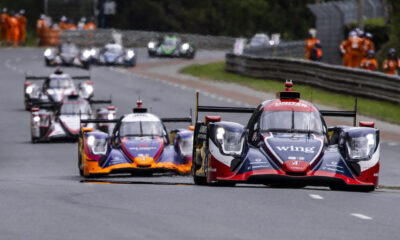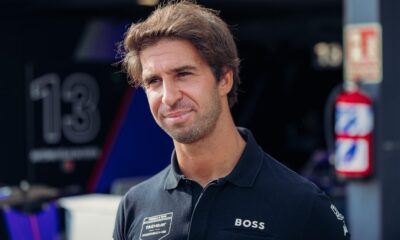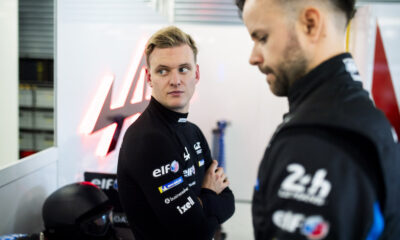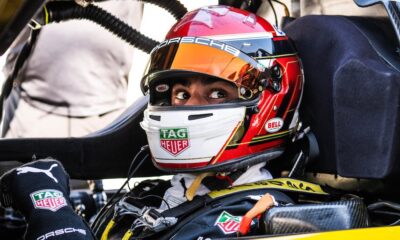
Image: MattyB727 – Car Videos
Porsche has tested a different exhaust layout for its GTE-homologated 911 RSR-19 that could appear at the start of the 2021 FIA World Endurance Championship season.
Footage has emerged of the latest 911 RSR model testing at Monza with rear-positioned exhausts rather than the standard side-mounted outlets in front of the rear wheels.
Porsche’s head of factory motorsport Pascal Zurlinden told Sportscar365 that the rear-mounted exhaust is not yet homologated and won’t appear on the RSR-19 this season.
But he explained that this layout is being developed to enable the RSR-19 to run quieter so that customers can operate it at circuits where strict noise limits are imposed.
Sportscar365 understands that redirecting and bunching the exhausts at the rear enables a silencer to be fitted, ensuring noise outputs conform to circuit restrictions.
“All regulations from a racetrack point of view are getting more severe,” said Zurlinden.
“As we plan to sell our ten customer cars, we want to make sure that our customers can run their cars at as many race tracks as possible during normal testing, without special authorizations.
“We decided to prepare this for the future, to develop an exhaust which is less loud. If it will come to action for the homologated car, this we will see in the future.”
This wouldn’t be the first time that Porsche has altered the design of its GTE exhaust.
The previous iteration of the mid-engined 911 RSR that was introduced in the 2017 WEC and IMSA WeatherTech SportsCar Championship seasons had the space between its pipes narrowed which led to the car adopting a distinctive scream.
Porsche replaced that car with the current RSR for the 2019-20 season in the GTE-Pro category, while the 2017 version is still raced by customers in the GTE-Am class.
The tight bunching of the rear-mounted outlets resembles that of the previous Porsche GTE car, following its design alteration ahead of the 24 Hours of Le Mans in 2017.
Potential for 2021 WEC Application
The development of a new exhaust layout started earlier this year, while it was recently deployed in two July tests at the Nürburgring and Monza.
In the event of Porsche pursuing a homologation, Zurlinden said the most likely debut for the rear-mounted exhaust would be in the opening round of the next WEC season.
However, its use in competition has yet to be determined, while it’s unclear if the homologation would be treated as an Evo kit of the current car or as a new model.
Zurlinden added that the redirection to the back of the car was a “quite simple” process that hasn’t required major adjustments to the rest of the 911 RSR-19’s powertrain.
He acknowledged that while the change will increase weight, any performance deficits would be offset by the WEC’s Balance of Performance.
“The weight saving is definitely lost,” said Zurlinden. “The empty car weight will be a bit heavier, so there will be less ballast to adapt your weight distribution.
“For the engine power, it’s a BoP category, so it will be corrected by restrictor size. The racing is so close in GTE, so we are not worried about that.
“It’s about making life easier for our customers to go driving wherever they want.”



























